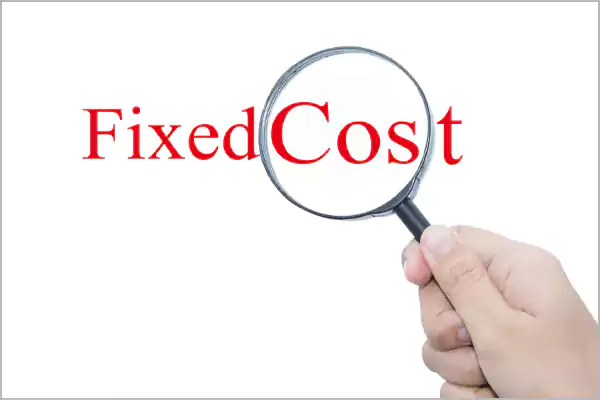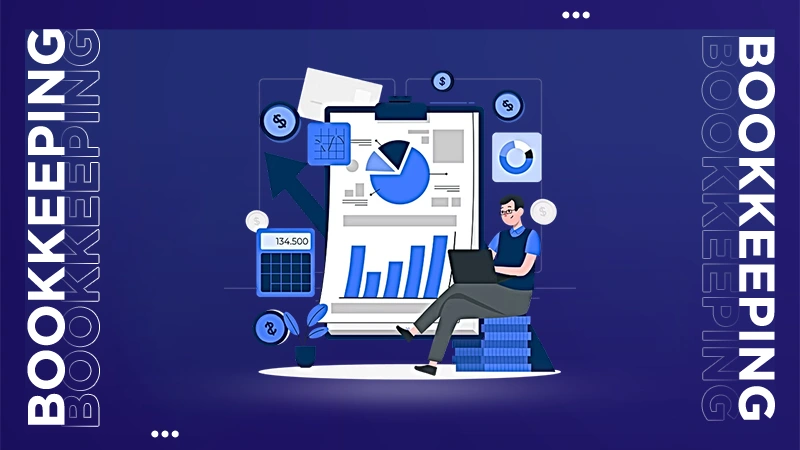Average fixed cost means the fixed cost of a unit in the product process.
Businesses run with a financial rhythm, and you know what keeps them going? It’s knowing their fixed cost. It is that component that never fluctuates, unlike the market. Plus, it has a profound impact on the profitability of the company.
We will explore in-depth fixed costs and learn how to calculate them in this blog. So keep on reading!
What is Fixed Cost?

As the name suggests, fixed costs refer to expenses that do not change or fluctuate based on profitability or sales volume. Fixed expenses remain the same, unlike other business costs such as variable or seasonal costs.
It is consistent and totally depends on the backend workings of the business, not its output. For example, if you have rented a space to open a jewelry studio, you need to pay the rent each month, no matter the sales. This payment for the space is your average fixed cost.
Now that you have the answer, “What is a fixed expense”, let’s move forward and dive deep into the concept.
Characteristics of Fixed Costs
Fixed costs have several distinctive features that play a major role in cost accounting and planning out the financials of your business. Here are the main characteristics:
- Stability: Fixed expenses remain constant regardless of production levels. They stay the same no matter if a company produces no output or its maximum output.
- Indirect Characteristics: These expenses are usually not directly linked to the creation of goods or services. Rather, they are generated as a component of operating the business.
- Recurring: Fixed expenses arise at consistent intervals, like monthly or yearly, and are frequently detailed in contractual agreements.
These are the features that add up to the importance of fixed costs and their calculations in business operations.
Examples of Fixed Costs
Fixed costs do not just fall into the business area; you can find them in your personal finances too, like Wi-Fi top-ups, groceries, and other daily expenses.
Talking about the business side of things, here are a few expenses a company has to incur:
- Rental and Lease Expenses: Companies typically pay consistent sums for office areas, manufacturing plants, or store sites.
- Salaries: The fixed salaries of management and permanent employees are categorized as fixed costs, in contrast to wages, which can fluctuate according to hours worked and are termed semi-variable costs.
- Insurance: Premiums for policies related to business insurance stay stable throughout the coverage duration.
- Depreciation: The slow decrease in the worth of assets like machinery or equipment is recorded as a fixed expense, except when computed from the declining balance depreciation method.
- Property Taxes: Real estate taxes are ongoing costs that usually remain constant regardless of production rates.
- Advertising: Certain marketing costs, like website hosting or managing social media, are consistent.
- Vehicle Payments: Payments for leased or bought company vehicles stay the same throughout the loan or lease duration.
These are the expenses you can not cut down on and are considered fixed costs.
Fixed Costs Vs Variable Costs
Businesses have a few costs that can not be altered and other costs that fluctuate, i.e., variable costs. People often confuse the two terms, hindering their opportunities to protect their wealth. So here’s the breakdown for proper understanding:
| Fixed Costs | Variable Costs | |
| Changes with Output | No | Yes |
| Nature | Indirect | Direct |
| Example | Rent, employee salaries, insurance policies. | Raw material, cost for expansion, utilities. |
What are Semi-Variable Costs?
There are certain expenses that you can not put in the set of fixed or variable costs, as they have both components and can occur anytime. Let’s say, every month you need to pay the base electricity bill (fixed charges), and additional charges depending on your usage, which is the variable cost.
Moving ahead, let’s now discuss the fixed expenses formula and calculation steps.
How to Calculate Fixed Cost?
To determine the fixed cost, businesses generally use two formulas to calculate their impact on production and profitability. These formulas are:
Fixed Cost Per Unit
This measurement helps companies identify the fixed expense associated with every unit manufactured. Let’s suppose a hardware company named DRH incurs total fixed costs of $10,000 and manufactures 500 units, resulting in a fixed cost of $20 per unit.
Fixed Cost Per Unit = Total Fixed Cost/Number of Units
Fixed Cost Per Unit = 10,000 / 500
= $20 per unit
Breakeven Analysis
Breakeven analysis determines the production volume where total revenue matches total costs. For example, if the fixed costs are $50,000, the unit sale price is $100, and the variable cost per unit is $60, the breakeven point will be 1,250 units.
Breakeven Analysis = Fixed Cost/(Unit Sale Price — Variable Cost per Unit)
Breakeven Analysis= 5000/(100-60) = 1250 units
Significance of Fixed Costs
Fixed costs hold an important role in the budgeting and calculation of financial metrics and sort of influence the decision-making process of a business. Here are its contributing factors:
- Operating Leverage: This factor assesses the impact of a company’s fixed and variable costs on its profitability. Firms that have significant fixed costs gain greater advantages from heightened output since extra units only involve variable costs.
- Management of Cost Structure: Knowing the accurate ratio of fixed to variable costs helps companies maximize pricing approaches, production timelines, and profit margins. Businesses frequently perform routine cost structure assessments to adjust to market trends.
- Profitability Prediction: Correctly identifying fixed costs is crucial for forecasting profits. Companies need to make sure that income surpasses total expenses (both fixed and variable) to stay profitable.
Benefits and Limitations of Fixed Cost
The fixed cost has both advantages and challenges. Knowing them all will help you do proper financial planning.
Benefits
Predictability: Fixed expenses are consistent in nature, enabling companies to estimate costs reliably.
Economies of Scale: When the scale of production increases, the fixed cost per unit diminishes, enhancing profitability.
Challenges
Rigidity: Increased fixed expenses can pressure a company during times of financial crunch and impact its ability to operate.
Risk: Companies with high fixed expenses are more prone to economic declines.
These are the certain pros and cons that come along with fixed cost and its calculations.
What are the Practical Uses of Fixed Cost?
Every business runs distinctly to one another, and fixed cost is what determines its operating mechanism. Here are some practical scenarios:
- Pricing Strategies: Businesses utilize fixed expenses to establish minimum price points that guarantee profitability.
- Capacity Planning: Having a clear idea of fixed costs helps companies determine the ideal production rates and distribute resources efficiently.
- Investment Choices: When a company plans on investing in multiple instruments or decides on expansion, fixed cost is the main point they look after.
Final Words
To sum up, fixed costs remain the same such as monthly rent compared to other costs (electricity bill, inventory cost, etc.) Maintaining fixed costs is important for finances, for that, you can use methods like standard costing, keep a check on your debt, and monitor and regulate your budget. So, this was all about fixed cost, its significance, practical uses, challenges, and fixed expenses formula.







